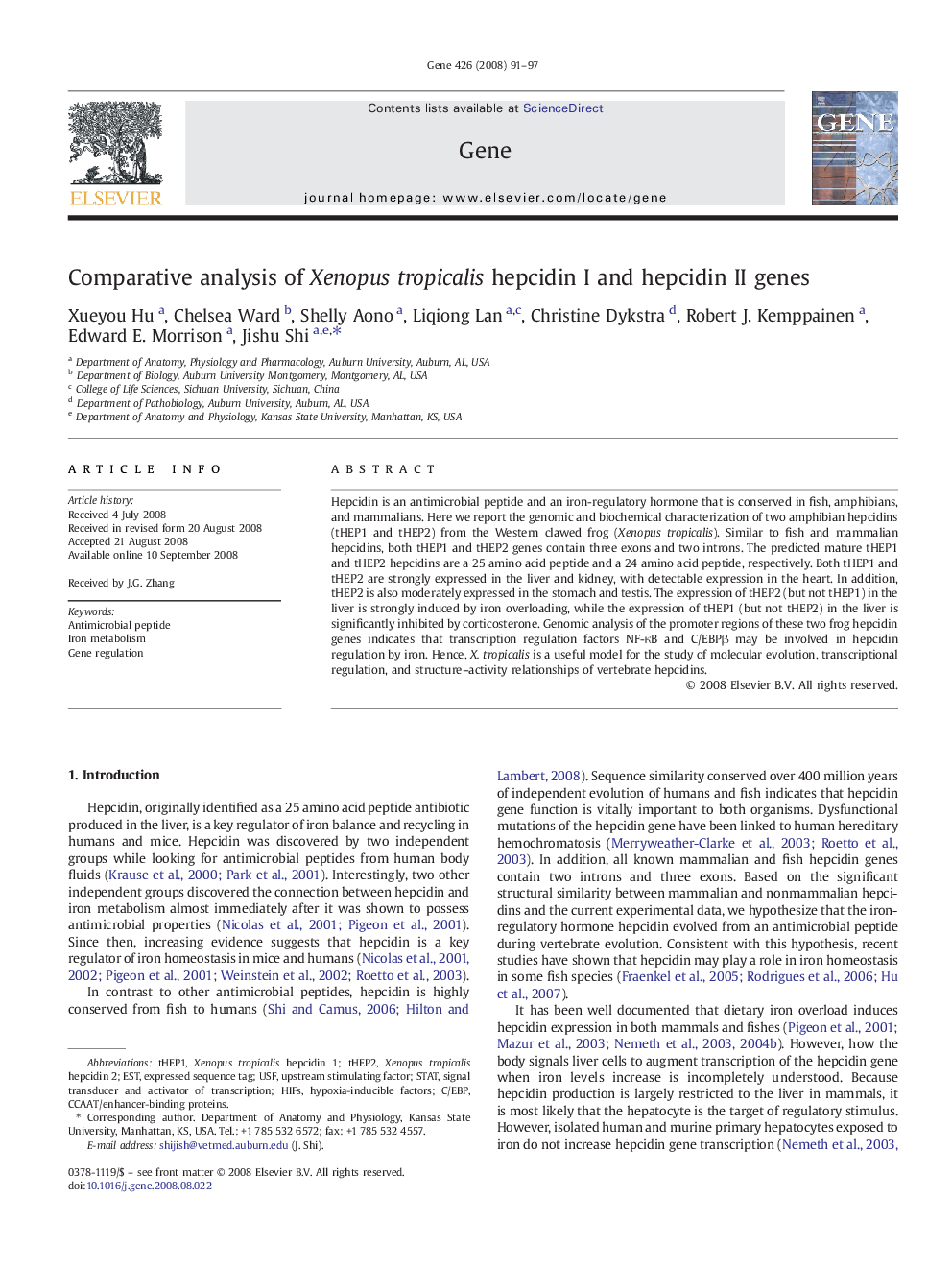| Article ID | Journal | Published Year | Pages | File Type |
|---|---|---|---|---|
| 2819069 | Gene | 2008 | 7 Pages |
Hepcidin is an antimicrobial peptide and an iron-regulatory hormone that is conserved in fish, amphibians, and mammalians. Here we report the genomic and biochemical characterization of two amphibian hepcidins (tHEP1 and tHEP2) from the Western clawed frog (Xenopus tropicalis). Similar to fish and mammalian hepcidins, both tHEP1 and tHEP2 genes contain three exons and two introns. The predicted mature tHEP1 and tHEP2 hepcidins are a 25 amino acid peptide and a 24 amino acid peptide, respectively. Both tHEP1 and tHEP2 are strongly expressed in the liver and kidney, with detectable expression in the heart. In addition, tHEP2 is also moderately expressed in the stomach and testis. The expression of tHEP2 (but not tHEP1) in the liver is strongly induced by iron overloading, while the expression of tHEP1 (but not tHEP2) in the liver is significantly inhibited by corticosterone. Genomic analysis of the promoter regions of these two frog hepcidin genes indicates that transcription regulation factors NF-κB and C/EBPβ may be involved in hepcidin regulation by iron. Hence, X. tropicalis is a useful model for the study of molecular evolution, transcriptional regulation, and structure–activity relationships of vertebrate hepcidins.
